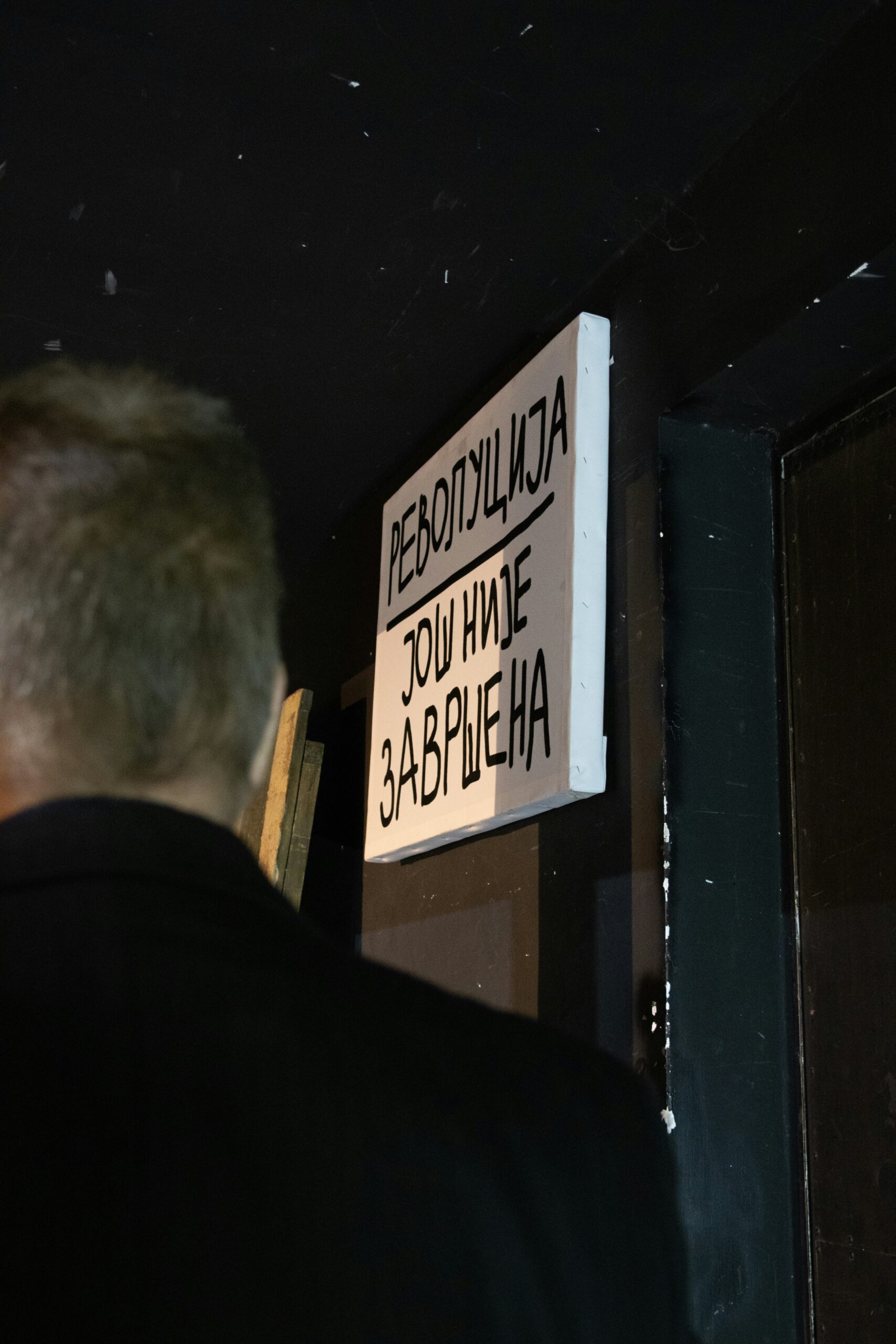
Introduction to the Incident
On a seemingly ordinary evening, Amsterdam’s bustling Dam Square became the scene of a shocking act of violence that captured headlines worldwide. The mass stabbing incident occurred on the night of [insert date], at approximately [insert time], during peak tourist hours when the area was filled with both locals and visitors. Dam Square, known for its historical significance and cultural landmarks, turned from a vibrant public space into a grim backdrop for this unsettling event.
The unexpected nature of this incident rattled the community and raised concerns over safety in urban environments. Mass stabbings, although not commonplace, can create widespread fear and anxiety. Such acts disrupt the sense of security that typically accompanies densely populated areas, particularly in cities like Amsterdam, which thrive on their vibrant street life and tourist attractions. Eyewitnesses reported scenes of chaos as local law enforcement and emergency responders rushed to the site, and the vibrant atmosphere was abruptly transformed into one of panic and confusion.
As details unfolded, the immediate reactions from various witnesses and officials showcased the gravity of the situation. The incident prompted a swift security response and raised questions regarding the motivations behind such an attack. Furthermore, it highlighted the urgent need for discussions surrounding public safety, mental health, and the influences that can lead individuals to commit acts of violence against others. In the context of ongoing global debates about security in public spaces, this particular incident sheds light on the broader implications of urban violence that require careful examination for both immediate and future interventions.
Background of Dam Square
Dam Square, or “De Dam” in Dutch, serves as a pivotal public space in Amsterdam, Netherlands. Its origins date back to the 13th century when it was established as a dam built to control the waters of the Amstel River. This strategic location has transformed over the centuries, evolving into a bustling hub for social interaction, cultural events, and tourism. Today, Dam Square is considered one of the most iconic landmarks in the city, attracting millions of visitors annually.
Several key structures surround the square, each contributing to its historical narrative. The Royal Palace, originally constructed as a city hall in the 17th century, represents the wealth and power of the Dutch Golden Age. Adjacent to the palace is the National Monument, a towering obelisk erected in 1956 to commemorate the victims of World War II. These landmarks not only beautify the square but also serve as critical reminders of Amsterdam’s tumultuous past and its developments over time.
Beyond its architectural significance, Dam Square functions as a social nexus, where locals and tourists converge for various activities. Street performers often showcase their talents, creating a vibrant atmosphere, while open-air markets and cultural events are frequently hosted. The square’s accessibility and central location make it an ideal place for gatherings and celebrations, reinforcing its status as a tourist hotspot.
The tragic recent mass stabbing incident at Dam Square has drawn significant attention due to its prominent role in the public consciousness. Given the square’s importance as a social and cultural venue, such violent occurrences resonate deeply with both locals and tourists alike, highlighting the urgent need for community safety measures. In essence, understanding the historical and cultural significance of Dam Square underscores why this incident is particularly impactful.
Details of the Incident
The recent mass stabbing incident in Amsterdam occurred on a busy evening, a time when the area was bustling with residents and tourists alike. Eyewitnesses reported that the attack took place suddenly, creating a chaotic atmosphere as people attempted to comprehend what was occurring around them. Initial reports indicate that the assailant, whose identity has since been a matter of investigation, appeared to target individuals seemingly at random, leading to a total of several victims sustaining injuries.
The nature of the injuries varied significantly among the victims, with authorities reporting both superficial wounds and more serious injuries requiring immediate medical attention. Emergency services were quick to respond; ambulances arrived on the scene within minutes, ensuring that injured individuals received prompt treatment. Medical teams worked diligently to assess and provide necessary aid to those affected, while law enforcement began to secure the area to prevent further harm and to gather evidence during this critical moment.
As news of the incident spread, local hospitals prepared for an influx of victims requiring care. The swift actions of medical and emergency personnel played a pivotal role in stabilizing many of the injured victims. First responders adhered to protocols designed for mass casualty situations, allowing for an organized evacuation of victims to various hospitals within Amsterdam. In light of the serious nature of the incident, a coordinated effort between police and medical staff was essential, demonstrating the resilience and preparedness of emergency services.
This incident has not only sent shockwaves through the local community but has also raised concerns regarding safety in urban areas. Authorities are continuing their investigation, examining potential motives and seeking to understand the events leading up to this tragic occurrence.
Victims and Community Impact
The recent mass stabbing incident in Amsterdam has profoundly affected both the victims and the wider community. Reports indicate that a total of seven individuals were injured during the attack, with injuries varying in severity. Among the victims, three individuals required immediate surgical intervention and remain hospitalized under careful medical supervision. The other four victims, while also receiving treatment, had relatively less severe injuries, yet the psychological scars from the event may last far longer.
This tragic incident has instigated a wave of fear and concern among local residents and tourists alike, particularly in the vicinity of Dam Square, a historically significant location. The sense of safety that many individuals previously felt has been replaced by anxiety and apprehension. Locals have expressed feelings of vulnerability, worrying that such violent occurrences may become more frequent, thereby altering their daily lives and interactions within the community.
In response to the incident, community gatherings and vigils have formed as a means of demonstrating solidarity. Residents are coming together to support the victims while also reaffirming their commitment to communal resilience. The emotional toll on the community includes heightened feelings of outrage and confusion, as people seek answers and understanding regarding the motivations behind such senseless violence. Furthermore, discussions surrounding enhancing public safety measures have become a paramount concern, leading local authorities to engage in dialogues about increased security presence within popular locales.
Ultimately, this incident has highlighted the fragility of public peace, challenging the sense of security in a city renowned for its openness and inclusivity. The community is now faced with the task of navigating their trauma while seeking to restore a sense of normalcy in the aftermath of this alarming event.
Law Enforcement Response and Investigation
The mass stabbing incident in Amsterdam prompted an immediate and coordinated response from law enforcement agencies. Upon receiving reports of the attack, police units swiftly arrived at the scene, securing the area and ensuring that emergency medical services could assist victims as quickly as possible. The rapid response was crucial in mitigating further harm and preserving evidence critical for the ensuing investigation.
In the days following the attack, Amsterdam’s police department indicated that multiple suspects had been apprehended in connection with the incident. These arrests were not merely reactive; law enforcement officials had engaged in thorough preliminary investigations that led to the identification and capture of the individuals believed to be involved. The efficiency of these operations reflects the effectiveness of ongoing intelligence-gathering efforts, community collaboration, and advanced investigative techniques employed by the police.
To reinforce public safety, authorities announced heightened police presence in key areas throughout the city. This increase serves as both a preventive measure and a reassurance to residents concerned about their safety in the aftermath of such violence. Public statements made by police officials emphasized their commitment to ensuring community security and their determination to pursue justice for the victims and their families. These communications play a vital role in maintaining public trust, as transparency regarding the investigation process and the measures being implemented can help alleviate community fears.
The police have established a dedicated task force to continue investigating the circumstances surrounding the mass stabbing. This task force is responsible for gathering detailed accounts from witnesses and analyzing available evidence, including surveillance footage and forensic reports. By taking a comprehensive approach to the investigation, law enforcement aims to provide clarity regarding the motivations behind the attack and prevent future incidents of such nature.
Reactions from Local and International Media
The recent mass stabbing incident in Amsterdam has drawn significant attention from both local and international media outlets, reflecting varied journalistic perspectives and narrative constructions. Dutch media, including prominent newspapers and news websites, extensively covered the event, focusing on the immediate aftermath, law enforcement responses, and the implications for public safety. Local broadcasters provided real-time updates, showcasing eyewitness accounts and community reactions that echoed a mix of shock, fear, and calls for enhanced security measures. Themes of violence and its societal impacts were prevalent in their reporting, highlighting the increasing concern over such incidents in urban areas.
International media organizations also weighed in, adding another layer to the discourse surrounding the mass stabbing. Outlets like BBC, CNN, and Al Jazeera reported the event with an emphasis on the global implications of knife violence, particularly in light of rising security concerns in various metropolitan regions around the world. Some reports explored the potential motivations behind the attack, deliberating whether it could be linked to broader socio-political issues. This narrative prompted significant discussion regarding the state of safety in public spaces and the responsibilities of governments to protect their citizens. Moreover, international coverage often referenced similar incidents in other countries, drawing comparisons and fostering a dialogue about systemic issues related to violence.
Analyzing the coverage reveals a dichotomy between local and international narratives. While local outlets tended to focus more on community impact and immediate implications, international reports often placed the incident within a global context, addressing patterns of violence and security. Such diverse reporting not only reflects the complexities of the incident but also raises questions about how societies respond to repeated instances of violence and the measures needed to prevent them in the future.
Political and Social Repercussions
The recent mass stabbing incident in Amsterdam has ignited significant political discourse, drawing reactions from various local government officials and politicians. In the wake of such a tragic event, many lawmakers have expressed their condolences to the victims and their families while calling for urgent measures to enhance public safety. The mayor of Amsterdam, in particular, emphasized the need for a comprehensive review of current security protocols within the city. This dialogue has opened up a broader examination of the underlying societal issues contributing to violent crime in urban areas.
Several officials have also highlighted the importance of community engagement in addressing safety concerns. They argue that local neighborhoods must play an active role in fostering a secure environment. This incident has prompted discussions around the possibility of increasing funding for community policing initiatives and awareness campaigns aimed at preventing violence. Furthermore, social services and mental health resources are under scrutiny, as many community leaders assert that addressing the root causes of violence is paramount in curbing future incidents.
Additionally, the mass stabbing has led to renewed scrutiny of national security policies. Some politicians advocate for stricter regulations surrounding knife ownership and distribution, while others emphasize the importance of maintaining civil liberties. This diverse spectrum of opinions reflects the complex nature of urban security challenges in Amsterdam and underscores the need for a balanced approach that considers both safety and individual rights.
As Amsterdam navigates the aftermath of this disturbing event, it is evident that the repercussions extend beyond immediate security concerns. The incident serves as a catalyst for a larger conversation about crime prevention strategies, public safety, and the cooperation between government entities and local communities. Policymakers are now faced with the challenge of formulating effective responses that resonate with the populace while ensuring the city remains a safe place for all.
Community Healing and Support Initiatives
In the aftermath of the recent mass stabbing incident in Amsterdam, the local community has swiftly mobilized to provide support and healing for the victims and their families. This tragic event has not only affected the individuals directly involved but has also left a profound impact on the entire neighborhood, fostering an urgent need for comprehensive community support initiatives.
One of the first responses was the organization of vigils, where residents gathered to honor the victims. These solemn events served as a platform for communal grieving and reflection, allowing individuals to express their condolences and solidarity. Attendees lit candles and shared heartfelt messages, creating an atmosphere of compassion and resilience. Such memorials are crucial as they help in processing grief collectively, reinforcing the strength of community bonds during difficult times.
Alongside vigils, local organizations have initiated various community service projects aimed at providing ongoing assistance to those impacted by the incident. Mental health services have been made readily available, recognizing the psychological toll of such violence. Community centers have hosted support groups, enabling victims and their families to share their experiences and receive guidance from professionals trained in trauma recovery.
Moreover, fundraising efforts have emerged to support victims’ families. These initiatives foster a sense of hope and solidarity, demonstrating that the community stands together against violence. Donations are being channeled towards medical expenses, counseling services, and memorial funds, showcasing the Amsterdam community’s commitment to healing.
The resilience of the Amsterdam community in the face of such adversity highlights the importance of collective support. As more people engage in healing and service, it reflects a profound solidarity in overcoming the scars left by this tragic event.
Conclusion: Moving Forward
The recent mass stabbing incident in Amsterdam serves as a tragic reminder of the complexities surrounding urban safety and community dynamics. As society grapples with the consequences of such violence, it becomes imperative to focus on collective resilience and coherent safety measures. This incident has not only affected the immediate victims and their families but has also reverberated through the broader community, highlighting vulnerabilities in public spaces.
In addressing the implications of this violent act, it is crucial to foster an environment of vigilance without succumbing to fear. Community cohesion plays a vital role in combating the potential rise of anxiety and divisiveness following such tragedies. Engaging in open dialogues about safety practices, emergency protocols, and communal support systems can empower citizens and enhance individual awareness regarding potential threats. This incident, while devastating, offers an opportunity for communities to come together, reinforcing solidarity in the face of adversity.
Furthermore, individuals and local authorities must collaborate to implement proactive safety measures. This includes increasing the presence of law enforcement in public areas, promoting awareness programs on recognizing suspicious behavior, and ensuring that mental health resources are readily available. Such actions can help cultivate a sense of security among the populace and contribute to a more resilient community.
Ultimately, while the immediate shock of urban violence can leave an indelible mark, proactive engagement and community solidarity can pave the way toward healing and recovery. By emphasizing understanding and mutual support, society can emerge stronger and more united against the backdrop of challenges posed by acts of violence, thereby ensuring that incidents like the recent mass stabbing do not dictate the future of public spaces in Amsterdam or beyond.


